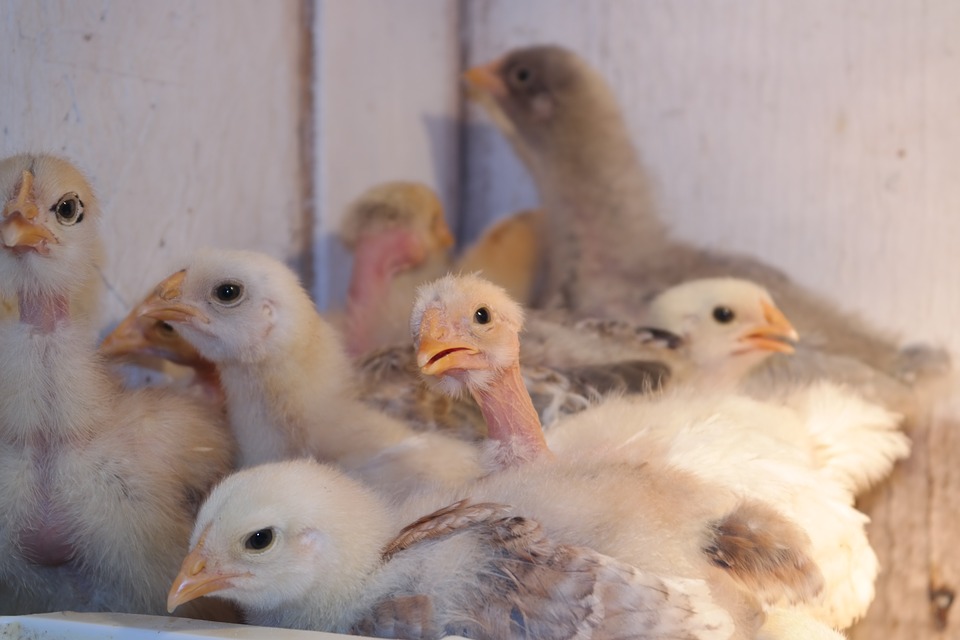“Chickens have Teenagers Too…
Thank Goodness They Grow Up!”
Baby Chickens are so cute and sweet and loveable…and then…they start looking gangly, getting too big for their small coop, start wrestling and fighting for dominance, stop behaving, eating you out of house and home….sound familiar? Yes, they are now teenagers. You have to find a bigger space for them and switch their food from chick food to grower/finisher food. They don’t need heat lamps because they are making their own heat and have lots of feathers to keep them warm.
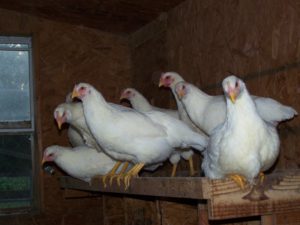
Chicken Teenagers
As your Chicken Teens begin to age they love to check out grassy spaces, so we us like to use a chicken tractor. Chicken tractors are small coops with wheels, which make it easy to move around once they eat the grass underneath the coop.
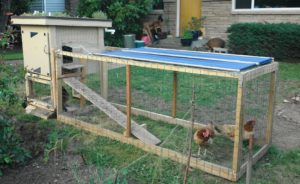 Chicken Tractor
Chicken Tractor
Its only 4-5 months from hatchlings to egg laying…so a proper coop should be researched during the teenage weeks. How big a coop depends on how many chickens you want to house. You will need one nest for every 4 hens. In our coop, we have 8 nests, so technically, we could house 32 hens, but we only have about 18-20.
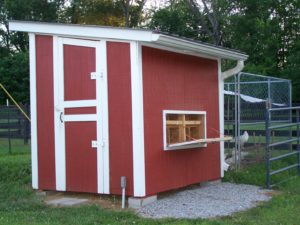 Our Stoney Creek Chicken Coop
Our Stoney Creek Chicken Coop
Chickens also need free range area or a fenced in yard to roam around in that is safe from predators. We have hawks which nest on our property, so we have a 6 ft. high fenced enclosure of 300 square feet with netting on top to prevent hawks or other predators (raccoons, mink, etc.) from entering.
Nest boxes can be filled with hay, straw, indoor, outdoor carpet, and pine shavings, but my personal favorite is the plastic mats bought from any farm store or hatchery catalog (Murray McMurray is the one we use) that you simply spray off to clean. The mats last us about 5 years….very durable. The mats will keep eggs from breaking when multiple hens go in and out of the box laying and tends to keep the eggs somewhat cleaner too.
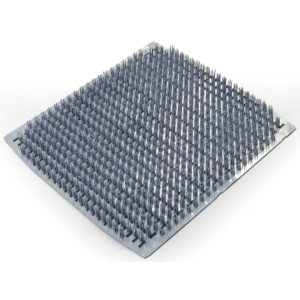 Chicken Nesting Mat
Chicken Nesting Mat
Now the Chickens Can Lay Eggs!
So now you are ready for egg laying! Be sure to upgrade their food to layer feed, because it has extra ingredients to help with producing better egg shells. It also does not hurt to add some oyster shell to their diet, since that will make stronger egg shells. Some people put a fake egg in the box to encourage production at first…they swear it works. Some of their first eggs may be very small…that usually means there is no yolk…don’t worry that is normal. Some of the beginning eggs may be EXTRA LARGE…don’t worry, those are twin yolks.
Now that you are an old hand at raising chickens and gathering all the eggs, you have to start thinking about the future… These hens will lay continuously for 50-60 weeks at full speed (260 – 280 eggs annually per chicken) and then they will go through what’s called “The Molt”. Molting begins at about 60 weeks of laying and the chickens will start losing their feathers (not all, just quite a few). Their bodies will start to make new pin feathers and will use all of their body energy to do that instead of laying eggs…so egg production goes down to about half speed. The Molt lasts about 4-6 weeks and by the end of it they will start laying better, but never at top speed again. This is usually the time period that are planning for by ordering new chicks which should be about ready to lay eggs by the time the molt happens. We then humanely slaughter the molting hens and rooster for the freezer. Since these are mainly egg laying chickens, they do not have a lot of meat, so we consider them stewing chickens for chicken and dumplings, soups and pot pies.
So goes the sustainable circle of life for our chickens.
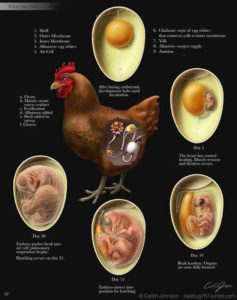
If you would like to learn more about Farm Animals and Sustainable Farm Living, check out our book, “Dirt Rich” available on Amazon, Kindle and www.stoneycreek.farm

